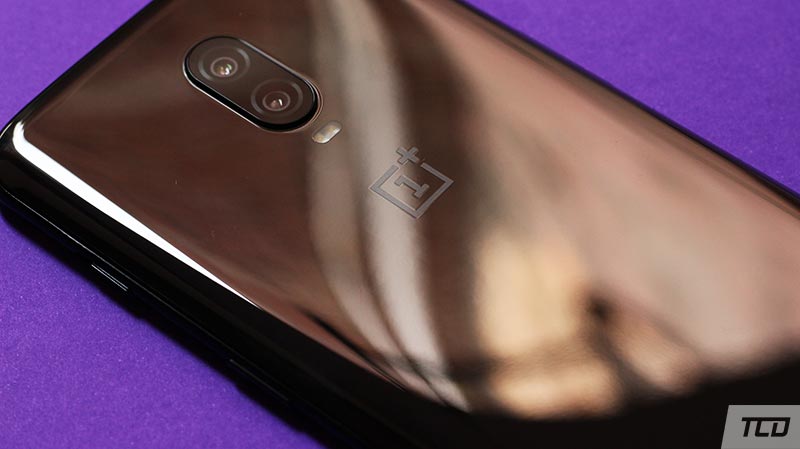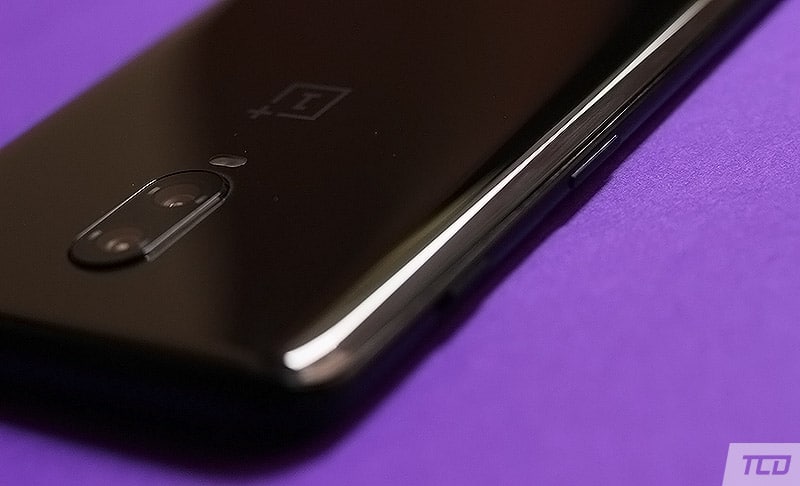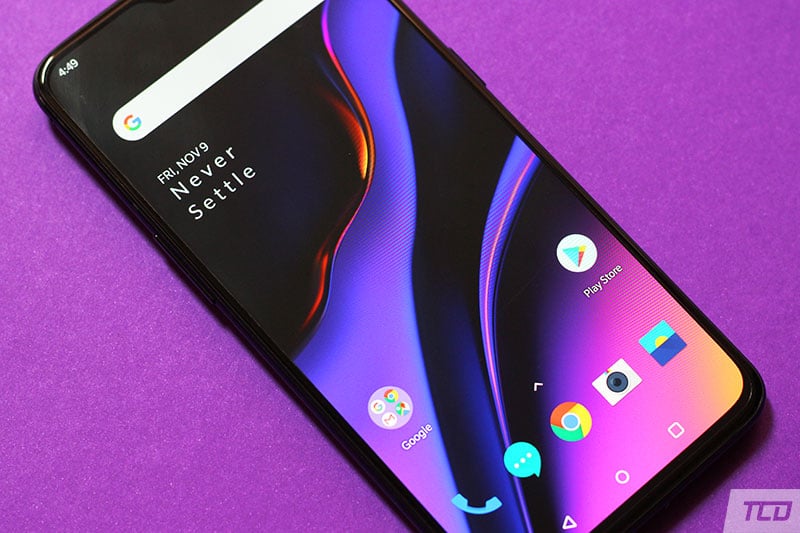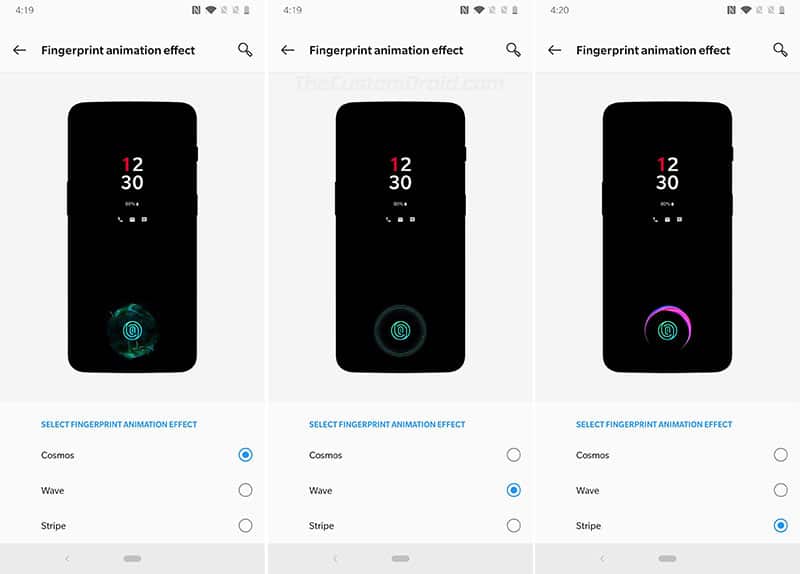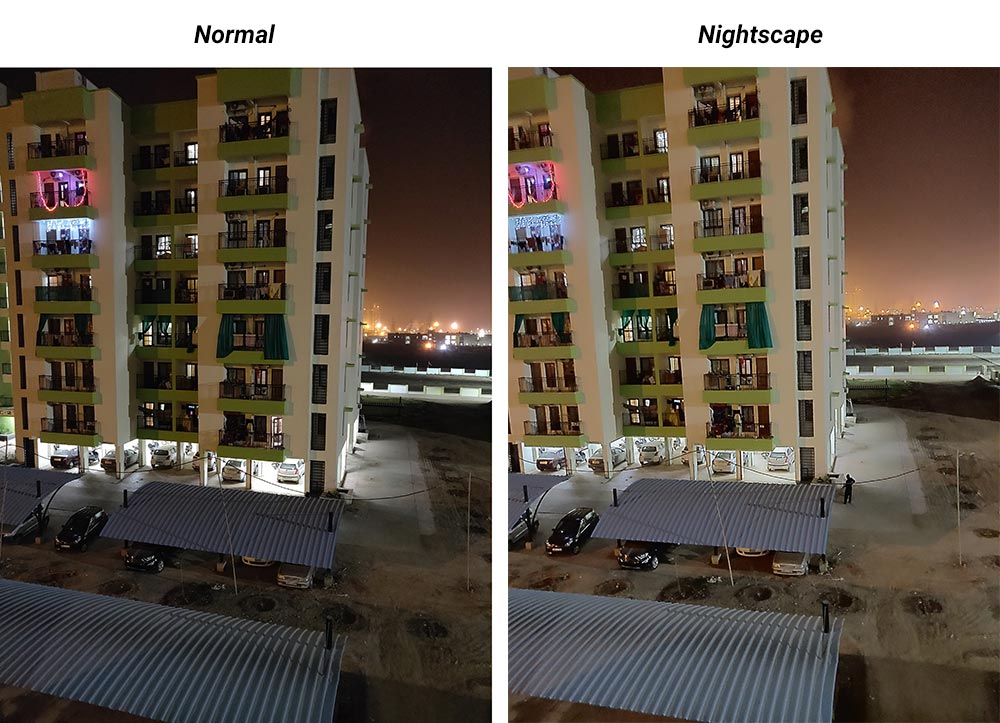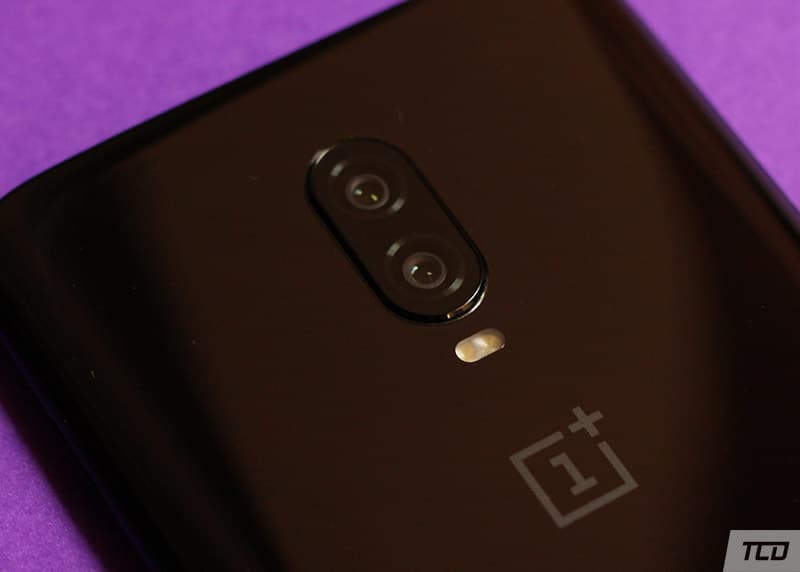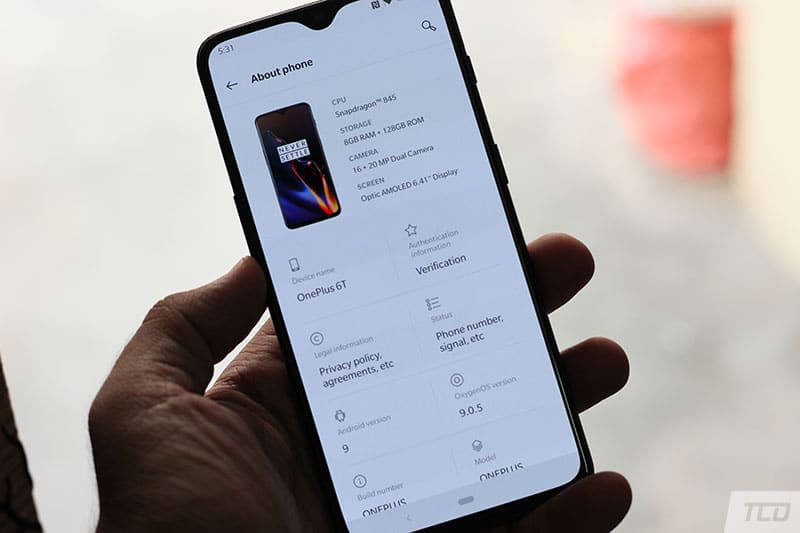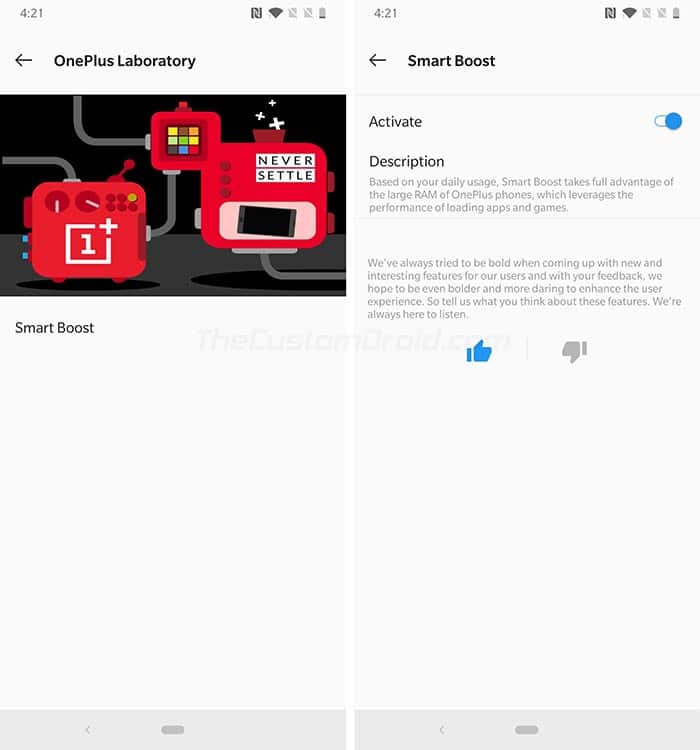A story of an In-Display Fingerprint Scanner, a Waterdrop Notch, No 3.5mm Headphone Jack, and a combination of powerful hardware and features.
OnePlus 6T is the mix of all major flagship attractions but at a lesser and more affordable price.
This year, OnePlus did a pretty fantastic job designing and manufacturing a smartphone that won a million hearts – the OnePlus 6. To further polish and perfect the experience delivered by the 6, the company has finally announced the “OnePlus 6T“. The phone was launched earlier this month and is certainly one of the “Best smartphones you can buy“. Ranging from a list of minor to major changes, the OnePlus 6T strives on delivering a flagship-standard experience but at a price significantly lower than the rest of competitors.
Advertisement
OnePlus, unlike many other well-established OEMs has made its own space in the Android ecosystem during the past few years. And that’s because the company focuses highly on the feedback provided by its community to create products that are actually built in the user’s best interest.
Today here in this OnePlus 6T Review, we will talk a lot about the phone itself and some of the major features and changes that it brings. But before that, let us talk a bit about my own story with OnePlus and why I chose to review its latest offering.
Page Contents
- About This Review & A Bit of Backstory
- Unboxing the OnePlus 6T
- The OnePlus 6T Review
- Design: That’s Meant to Impress
- Display and Notch: A True Immersive Bezel-less Experience
- Screen Unlock: The In-Display Fingerprint Sensor
- Camera: Better at Night with Nightscape
- Battery: No Wireless Charging Support
- No IP Rating
- Software: OxygenOS is Clean and Fast with Android 9 Pie
- Performance, Storage, and Price
- The Verdict
About This Review & A Bit of Backstory
This is not a sponsored review, I didn’t get a free review unit from OnePlus, rather I bought a retail unit in India via Amazon IN. I shall try to shed light on the major, if not all, aspects of the OnePlus 6T in an unbiased manner.
Advertisement
So, let’s start!
I still remember the Google Nexus era, when we could get the standard flagship performance and features at a pocket-friendly price tag. Personally, I have never parted ways from Google devices ever since I bought the Nexus S in 2012. Since then, I have owned the Nexus 4, Nexus 5, Nexus 6P, Google Pixel 2 XL, and now the Google Pixel 3 XL.
But it was back in January 2016, when I bought myself a non-Google device – The “OnePlus One“. I was highly convinced by the fact that it came with CyanogenOS (The commercialized version of CyanogenMod, now known as LineageOS), which was one of my most-favored custom skin back in the day. It wasn’t until I actually used the device, that I knew how well OnePlus One did overall. Be it the signature Sandstone White design, the powerful hardware, or the clean near-AOSP software, the phone had it all packed at a reasonable price of $299.
OnePlus is a brand which is actually designed for the community, taking its users’ feedback very seriously
And two years down the lane, I can easily say that OnePlus phones are truly remarkable, striving on delivering the best user experience to its buyers. OnePlus is a brand which is actually designed for the community, taking its users’ feedback very seriously. After the OnePlus 2, each year, OnePlus has manufactured and released two phones. The latter of which adds a “T” modifier to the former model, bringing in further improvisations and adding more details.
So finally, when the OnePlus 6T was announced back earlier this month, I was sure that I needed to purchase it. Apart from the storage/RAM variants, the phone comes in two different color options. Midnight Black, that has sort of an anti-glare matte finish on the back and Mirror Glass with a shiny reflective surface. I got myself the 8GB + 128 GB Mirror Glass variant.
After a few days of constant usage, I am ready to leave a review. We will bump off with a short unboxing below.
Unboxing the OnePlus 6T
I still remember unpacking the OnePlus One and it had the best smartphone packaging ever! Perhaps, there’s no denying that OnePlus gives a lot of attention to details.
With the OnePlus 6T, you’ll get a standard rectangular box wrapped by a strip note, defining the “OnePlus Community” and it looks kind of cute. And right after you open the box, you will see the OnePlus 6T sitting right on top. The plastic frame holding the phone can be opened. It contains the manuals, a SIM injecting tool, a OnePlus-branded TPU gel case. So, you wouldn’t have to rush to a nearby store or order one yourself online right after you take out the 6T off the box. The company does care a lot about its users and the device they buy (*wink*).
Below that, you shall see a neat invitation letter directly from OnePlus’ CEO Pete Lau (@petelau2007). The letter basically welcomes you to the community and definitely adds a nice touch to the unboxing experience.
And finally, at last, you will see the in-box accessories. There’s a standard USB Type-C charging cable, which you can also use to connect your 6T to the PC.
The Fast Charger provided in the box is ridiculously big (For the 6T delivered in India and maybe some other countries as well) and sometimes would refuse to plug in on certain switchboards. I and many others would have loved a charger smaller in size.
OnePlus already answered to this in the AMA. According to them – “We need to comply with Indian laws and regulations and also be able to charge our phone safely“. Despite that, I still feel that the charger is bulky as it looks and OnePlus should do something about it. It’s difficult to plug in any other charger if the OnePlus charger is plugged on the board or a power surge strip.
OnePlus also decided to remove the headphone jack for accommodating space for the bigger battery. Which means, most of us would now transition to wireless headphones. However, if you’d still like to use your regular set of 3.5 mm headphones, OnePlus has diligently provided a free Type-C to 3.5 mm connector.
That’s all!
The OnePlus 6T Review
In this review I won’t share the phone’s full specs, you can find them at a lot of online places out there like GSM Arena. I will only focus on the major things that need attention. Starting up with the phone’s aesthetics, I will move further to the details, something that OnePlus focuses on, a lot.
Design: That’s Meant to Impress
The phone’s design is where I am most impressed. Just like the OnePlus 6, the 6T also carries an Aluminum frame with a ceramic glass back (If you bought the Mirror Black variant), that gives it a decent premium finish. The glass back is easily prone to fingerprints, which isn’t a shocker. Though, the marks are not that visible, until observed closely.
One thing that I’d like to point out is the slipperiness that the phone attains on certain surfaces. So, be careful and rest your 6T on a flat surface, at all times if possible. You wouldn’t even know when it slips off (It happened to me, but thankfully the phone only slid off from my laptop’s case to the desk, phew!)
Advertisement
On the rear, the dual-camera lens is placed vertically with the pill-style flash at the bottom of it. The official OnePlus logo goes a bit below that, with the “Designed by OnePlus” text placed towards the bottom of the glass back. With the inclusion of the new In-Display Fingerprint technology (We will talk more about this below), the physical fingerprint sensor has been completely removed from the phone’s back.
The edges of the phone are rounded that gives it a nice and comfortable feel in the hand too. While the 6T is about 0.4mm thicker and 8 grams heavier than the OP6, it still feels pretty light and slim. So even if you upgrade from the OnePlus 6, the feeling will still be very familiar to the hands.
Similar to the OnePlus 6, the 6T also has the Alert Slider and Power button on the right. The dual-SIM tray and the Volume rockers are placed on the left. I quite like the button placement on the phone as my index finger and thumb rest right on the buttons naturally. That’s something I really wish was on my Pixel 2/3 XL too.
I still find it annoying, connecting an additional connector everytime I want to use my wired headphones.
The top edge of the phone’s body is pretty much empty with a single microphone. The bottom edge holds the speaker grill and the USB Type-C port for charging and headphones. Yes! You heard that right “headphones”. There’s no 3.5 mm headphone jack anymore, which could be a major bummer for many of you out there. Personally, I am not much disturbed by its removal since I have got used to the Pixel 2 XL, which doesn’t have the headphone jack too.
But despite being habitual with the experience, I still find it annoying, connecting an additional connector everytime I want to use my wired headphones. I haven’t really moved to wireless earphones yet, but if you have, then you wouldn’t feel a difference at all.
Overall, I extremely loved the phone’s design, something we normally only see on high-end Android flagships. The attention to detail clearly tells us the amount of work that has gone into designing it. It looks attractive and at the same time, feels good in the hands. So, to sum up, the OnePlus 6T’s design is a true outcome of pure craftsmanship.
Display and Notch: A True Immersive Bezel-less Experience
At first, I would have merged this section in the one above. But the OnePlus 6T’s display is an area that received some major improvements, and thus deserved a separate section. Like its younger sibling, the OnePlus 6T also features an Optic AMOLED display. However, the major difference lies with the screen dimensions. The screen is now 6.41 inches with 1080 x 2340 pixels resolution and an increased screen-to-body ratio of 85.6%. For superior protection, the OnePlus 6T’s display is equipped with Corning Gorilla Glass 6.
The display colors are well saturated and offer deep blacks and solid contrast for a good viewing experience. The company introduced a couple of display color profiles in the OnePlus 6T including DCI-P3 mode. I have always favored the display of OnePlus phones, especially when compared to those of my Pixel 2 XL’s.
OnePlus has also reduced the size of the notch significantly, thus accommodating the larger screen size. The notch now looks much comforting and is styled like a waterdrop (or teardrop, whatever you may like to call it), holding the secondary/front camera lens. The small notch isn’t the only reason for the true immersive display experience. The size of the chin, as you can notice, has been reduced a tiny bit as well.
In general, I have always felt that display cutouts (or notches) disturb the viewing experience. The smaller notch on the OnePlus 6T is definitely a plus compared to what the rest of the competition offers, especially when I place it beside my Pixel 3 XL. It feels almost invisible when operating the phone.
But in its run to reduce the notch size and add a few more millimeters to the screen, OnePlus also ditched the ‘Notification LED’. When asked about it in the AMA, OnePlus told that they have improved the Ambient Display feature to view notifications by just picking up the phone or tapping the screen. However, personally, I would have rather liked the LED notification light.
Overall, taking the Notification LED out of the picture, I am quite impressed with the OnePlus 6T’s display, its size, and the deep colors.
Advertisement
Screen Unlock: The In-Display Fingerprint Sensor
One of the most anticipated features of the OnePlus 6T is its ability to unlock the phone by simply placing the finger on the screen. The feature, known as “Screen Unlock” works through an in-display fingerprint sensor placed under the screen itself.
I have seen the similar technology on phones like Vivo Nex and Oppo Find X, but it is nothing like what the 6T brings. According to OnePlus, the in-display fingerprint sensor is the fastest (0.36 Seconds) when compared to the current competition. I did use the in-display fingerprint scanner and it works like a charm, with some cool unlocking animations as well.
Also, you cannot simply place the finger anywhere on the screen to bring up the fingerprint scanner. There’s a dedicated area on the screen that works for it and you’ll need to wake the phone for that. Simply putting the finger on the area while the screen is off would not work.
What’s cool about the in-display scanning is some hefty unlocking animations. So while you put on finger on the scanner, it will trigger the selected animation, which definitely adds up to the user experience. There are three different animations (Cosmos, Wave, and Stripe) which could be selected within the device settings.
I’d have personally loved the fingerprint sensor on the power button. I mean that’s exactly where our fingers would rest most of the time. But, at the same time, I am quite happy that OnePlus took a totally different approach to screen unlock when we talk about the competition. Been using the in-display fingerprint sensor for some days now, while I am still trying to get used to it, it does live up to the mark and is certainly faster than the competition.
Camera: Better at Night with Nightscape
Although the camera hardware stays mostly the same as the OnePlus 6, the 6T does deliver two unique features that aim at improving the camera experience. And these are – Nightscape and Studio Lighting. I will explain and talk more about these features below.
With the OnePlus 6, the OEM got a lot of feedback from users complaining about the images shot in low-light or during night time. OnePlus did listen to it very carefully and developed a feature known as “Nightscape”, which helps the users take more detailed and well-lit shots in low-light environments. As OnePlus explained, Nightscape is a combination of various technologies and algorithms.
The outcome is a result of four different stages:
- First is Nightscape HDR that fuses up to 10 frames to present details in both the dark and lighted areas
- Second is Detail Optimization that makes the image clear and sharp
- Third is Noise Reduction that clears out the noise in the image
- and Fourth is Multi-frame Stabilisation that avoids blurriness caused by shaking while clicking the image.
The images you see above were shot at night (You can also view the original images on the Google Photos album). The image on the left was shot using the normal ‘Photo’ mode, while that on the right was captured using ‘Night’. The most noticeable improvements could be seen at the darkest sections of the two images. Although OnePlus 6T’s Nightscape is not as good as the Pixel 3’s Night Sight, it does help you capture some clear shots in low-light. I am excited to see how OnePlus would improve the feature further.
NOTE: In order to capture the details properly and avoid shakiness (You can see some in the top-left section of the image on the right), make sure to keep the phone still for a few seconds.
The next in line is “Studio Lightning”. It is not something that you can enable by toggling a switch, rather a feature standardized throughout the camera itself. I am not quite sure if I can tell the difference, so I wouldn’t be able to comment much on it.
Apart from that, the OnePlus 6T’s camera is simply great and can help you capture some really nice photos even at night. Portrait mode, on the other hand, will allow you to take close up shots with the background blurred. I did compare it side-by-side with the Portrait Mode on the Google Pixel 3 XL (see the image below). What I found was that the image taken by the Pixel was more detailed, at least in low-light conditions. It doesn’t mean that the 6T’s was bad, but yes, it could be improved over time.
Advertisement
Other features include Pro Mode, Time-Lapse, Slow motion, and Panorama. The 6T can capture slow-mo 1080p videos at 240 FPS and 720p videos at 480 FPS.
Battery: No Wireless Charging Support
“Charge Less, Do More.” has always been OnePlus’ belief ever since the OnePlus 3. The technology has long been carried over to all other OnePlus devices as well and it doesn’t come short on impressing. Compared to the predecessor, the 6T now holds a bigger 3,700 mAh battery, which is one of the reasons for the very-slight increase of the phone’s thickness.
The all-new bigger battery, when paired with the Dash Fast Charge technology, can give you about 50% of charge in just about 30 minutes. While I personally don’t mind resting my phone for an hour or more to get a full charge, but for those of you who are always in a rush, then Fast Charging is really the thing for you. Although, note that Fast Charging only works with OnePlus’ own charger that you got in the box or purchased online from them. Even using a certified charger that supports Qualcomm’s Quick Charge technology won’t work.
One thing in particular that I didn’t like about my Pixel 2 XL and now the OnePlus 6T is the lack of Wireless Charging Support. I would have loved to simply rest my phone on a surface for charging, but then that’s a personal preference. The fact that the 6T uses Fast Charging may be enough to compensate for the missing feature. What do you say?
No IP Rating
Another aspect of the OnePlus 6T that I wanted to create a separate section for concerns the unavailability of IP rating. This is where I think OnePlus did right and saved us some money.
Even though there’s no IP rating, OnePlus said that they have improved water resistance on the 6T and have built it to stand against everyday situations. It can take up a few splashes of rain and keep running. But it doesn’t mean that you can take your phone for a swim (Who does that?!).
In order to be certified for IP ratings, the phone would have needed to go through rigorous testing which ultimately increases the cost (about $30 per device). The company wants the best for its users and I think it made the right decision not getting it certified. But if you think it should have been there, please let me know why? I’d love a healthy discussion.
Software: OxygenOS is Clean and Fast with Android 9 Pie
Google released Android Pie back in September and the OnePlus 6T is one of the first few Android phones to come with it out-of-the-box. Being based on Pie, the all-new OxygenOS comes with all the standard features. This also includes the new Navigation Gestures, which I really like. OnePlus also provides the options to switch between three different navigation options. You can choose between the standard on-screen buttons, or the Back and Home button as seen on Pixels running Pie, or full-screen gestures that go without any buttons.
OxygenOS on the OnePlus 6T also gives the liberty to customize the Ambient Display clock style. There are a total of 4 different analog and digital clock styles to choose from. Should you want, you can also manually switch between a Dark/Light theme in the phone’s settings and further change the accent color system-wide.
“Smart Boost” is a newly introduced software feature that uses the phone’s memory to speed up device boot and app launch times. Although, I personally haven’t been able to tell the difference. The phone already feels so fast and snappy, that observing a minor difference is hard.
OxygenOS with Android Pie feels right for me. The reason I love OxygenOS is that it is close to stock Android and comes with selective only the most useful customization options. Like other OEM skins, OxygenOS isn’t packed with features which you will try for once and forget about them later. It’s fast, doesn’t lag,
Performance, Storage, and Price
For the year 2018, the Qualcomm Snapdragon 845 has been the choice of weapon for every OEM flagship phone. Even the OnePlus 6 which was released earlier this year offers the same, and it seems to be unchanged with the 6T as well.
With SD845 working hand-in-hand with OnePlus’ OxygenOS software, you can expect performance at its peak. Even if you’d be gaming for hours, the OnePlus 6T will hold up, even though it doesn’t use a dedicated cooling mechanism, something that we saw in the mid-range POCO F1. Overall, I am pretty convinced with the performance. The phone feels snappy while navigating the UI and even during aggressive multi-tasking.
Another area which I’d like to point out is the lack of stereo speakers. After using phones like the Nexus 6P and Pixel 2 XL, I can instantly tell the difference in sound with the speakers in the 6T. On the other hand, support for Qualcomm’s aptX HD is a decent plus when streaming must wirelessly.
There are few changes in terms of the internal hardware. The base storage is being upped to 128 GB instead of 64 GB. So, there are three different RAM and storage combinations to buy from – (1) 6 GB + 128 GB; (2) 8 GB + 128 GB; and (3) 8 GB + 256 GB. The increment in the storage of the base model directly impacts the price too.
All the three variants are priced at INR 37,999, INR 41,999, and INR 45,999 respectively, in India via Amazon.in.
The Verdict
If you’d ask me, I really don’t feel any major urge to replace the OnePlus 6 with the 6T. But if you do have a thing for a smaller notch, a bleeding-edge in-display sensor, and can sacrifice the 3.5 mm jack, then you might even go for it.
On the other hand, if the budget’s your concern, then I would say the OnePlus 6T is the full package for you! There’s no need to spend a hefty amount on the Pixel, or Samsung Galaxy/Note devices that specifically come with a lot of junk and literally the worst timings for software updates. The OnePlus 6T, on the other hand, provides one of the cleanest Android experience with OxygenOS based on the latest Android version (and my most favorite too) – Android 9 Pie. The OnePlus 6T truly stands out and is no less than a flagship device, at a price you can afford.
As for me personally, the OnePlus 6T has all the potential to replace my fanaticism for the Pixel phones. Though I don’t really mind the headphone jack’s removal, there is a particular feature that I miss. I am deeply used to Always-On display on my Pixel 2 and 3 XL. Though it’s not a major feature, I rely on it a lot. I would love to see the feature being implemented and it would be a perfect affordable flagship for me.
To conclude:
The OnePlus 6T is a phone that packs flagship-level specs, a premium design, a unique new way of unlocking the screen, and rocking software, all at a non-flagship price tag.
Are you going to upgrade your OnePlus 6 OR replace your current OEM flagship with the 6T? Do let us know what made you transition to the OnePlus experience via the comments.


